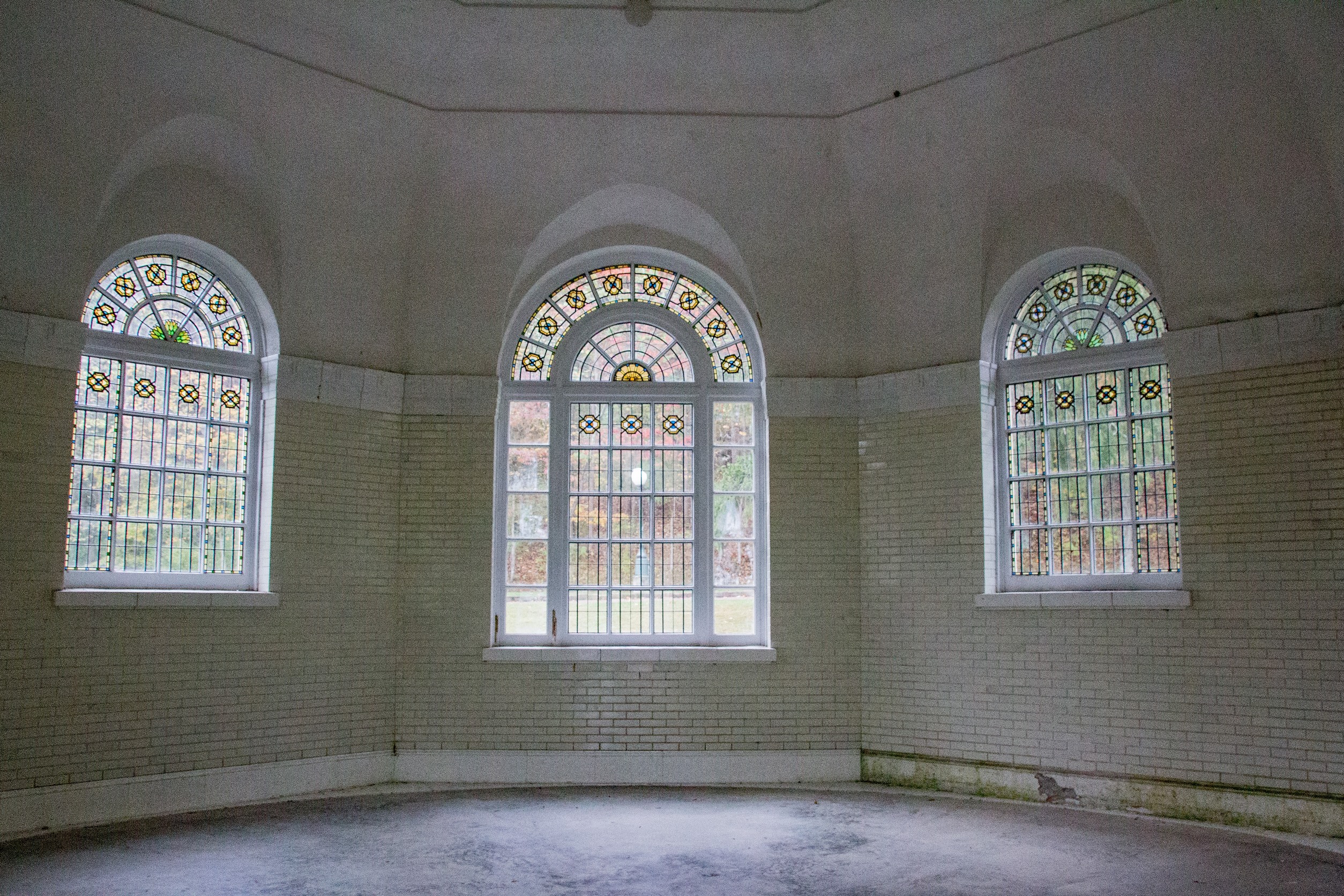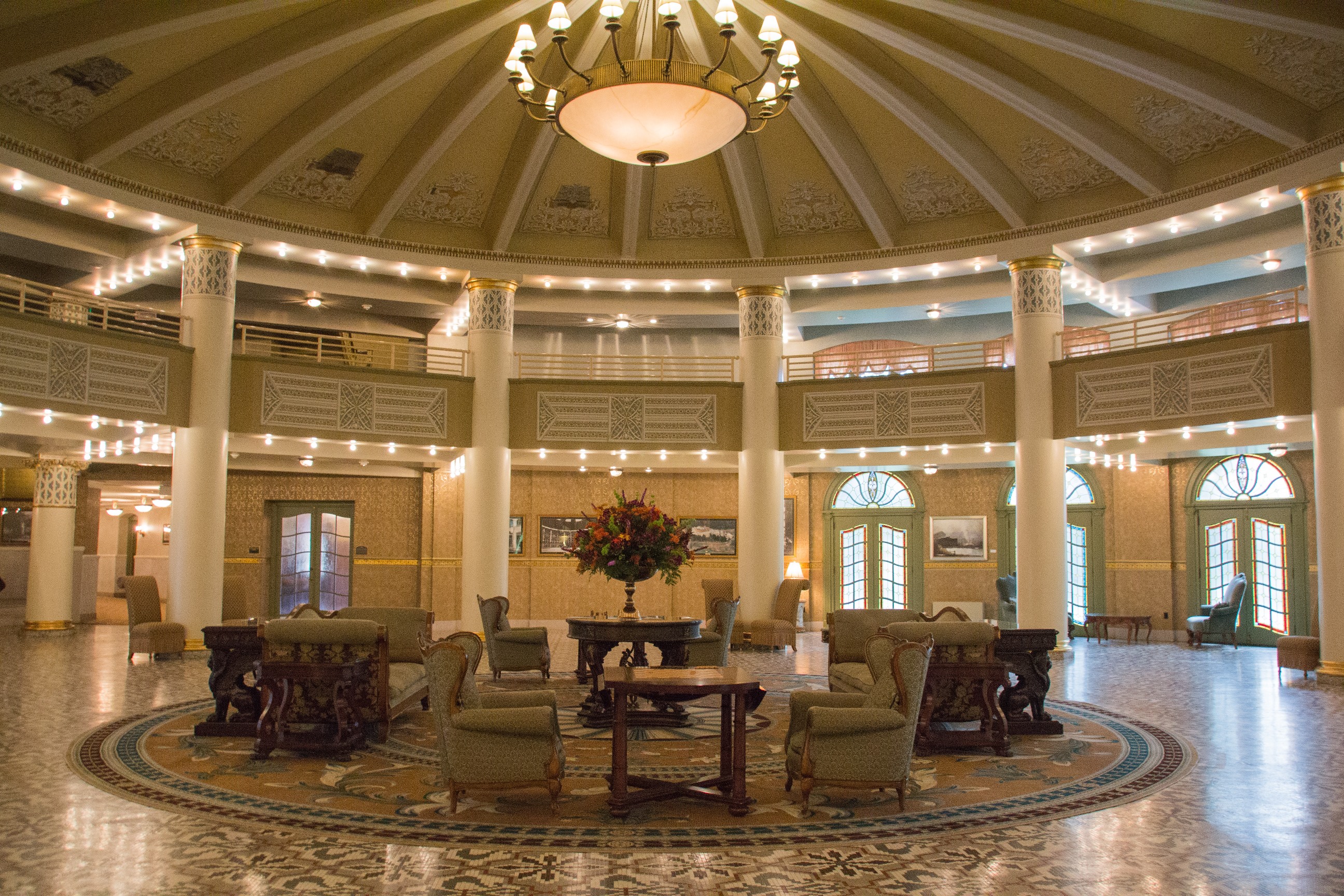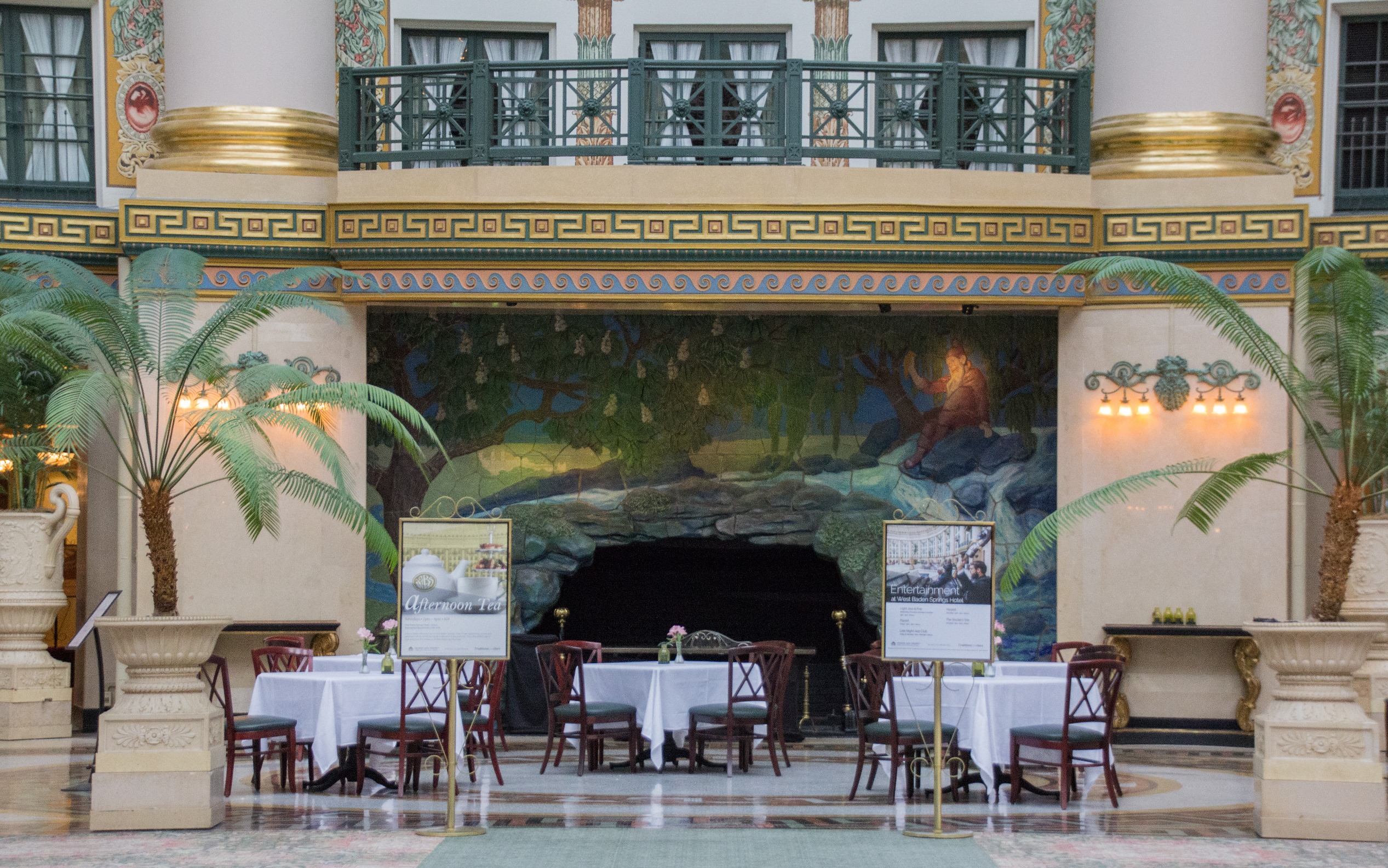Lee W. Sinclair dubbed his dream hotel “the eighth wonder of the world” when he built it in 1901. The opulent West Baden Springs Hotel’s centerpiece was the dome-topped 200-foot diameter atrium. The rest of the hotel and the surrounding grounds were grandiose, as well. The West Baden Springs Hotel, along with neighboring French Lick Springs Hotel, was the wealthy’s place to go. West Baden Springs was more than a hotel; it was a full resort. The resort included a casino, a velodrome, and a baseball field that professional teams used for spring training. However, West Baden Springs was best known for its mineral springs that had healing powers. We toured the West Baden Hotel during our recent French Lick, Indiana, visit and learned of the hotel’s rise, decline and restoration.
West Baden Springs Hotel history
Dan, our guide, filled us in on the West Baden Springs Hotel history before we started our tour. A man named John Lane built the first guest house on the property in 1855. Lee W. Sinclair came as a guest and was so impressed with the medicinal waters that he bought the property. Sinclair made many improvements over the next thirteen years. Unfortunately, that hotel burned to the ground in 1901.
Just one year later the new, lavish West Baden Springs Hotel opened. The hotel did well until the Great Depression. Business declined then, and the hotel closed. In subsequent years, the Jesuit Order used the hotel as a seminary, and Northwood Institute used it as a college.
The hotel sat vacant for several years, and in 1991 a portion of the exterior wall collapsed. In stepped Indiana Landmarks, a historic preservation organization. Indiana Landmarks stabilized the hotel, and in 1994, the COOK Group, purchased the property. Headed by Bill and Gayle Cook and their son Carl, the COOK Group invested millions of dollars in restoring the hotel.
West Baden Springs Hotel gardens
Our tour started in the gardens before we scurried onto the porch when it started to drizzle. But while we were in the garden, we learned more of the property’s history. At one time a hospital stood in the garden area, which eventually burned down. After the fire, Sinclair’s daughter Lillian, who had inherited the property, beautified the garden and made additional improvements to the hotel.




The hotel lobby
We went into the hotel through the original entrance that is no longer used by hotel guests because it requires climbing stairs. An ADA-compliant entrance has been added on what used to be the back side of the hotel.
The lobby has its own dome, albeit smaller than the dome in the atrium.
In the early 1900s, the ladies would gather on the lobby’s mezzanine. Just off the lobby was a gentlemen’s lounge. Single men would be brought into the lobby where they ladies would view them from the mezzanine. Later a lady might have tea with a gentleman who caught her eye.
When the Jusuits owned the building, they turned the lobby into a chapel and added the leaded glass.
Don’t miss a Midwest Wanderer post. For a FREE subscription, enter your e-mail address in the Subscribe2 box to the right and click Subscribe.
The atrium
From the lobby, we moved into the atrium. Dan explained that building the dome was quite a feat for the time. The atrium measures 600 feet in circumference, 200 feet in diameter, and 100 feet from floor to the disk that is attached to the dome. In building such a structure in the early 1900s, there would normally be several casualties. However, there was not one death or serious injury during the building of the entire six-story hotel. We also learned about the structure process and how it allows for natural expansion and contraction.

Also in the atrium is a Rookwood ceramic fireplace that could burn logs up to 14 feet long. Ceramic was the wrong material to use, as it acts as an insulator to the fireplace bricks. Bricks that get too hot can explode. Fortunately, the bricks behind the ceramic didn’t explode, but they did fracture. The bricks cannot be replaced without removing the ceramic, so today fires are not burned in the fireplace. It is just a showpiece.
Beyond the tour
After the tour, Dan was kind enough to show my husband and me a few areas that aren’t part of the tour. Sinclair’s Restaurant is the fine dining restaurant in the West Baden Hotel. There are several casual dining options in the hotel, as well.
Our last stop was the West Baden Spa and the natatorium.

The indoor pool was the longest I’ve ever seen in a hotel. The pool is about a meter short of being Olympic size.
If you take the West Baden Springs Hotel tour
Although they started as separate resorts, today the COOK Group owns both the West Baden Springs Hotel and the French Lick Springs Hotel. The two hotels and surrounding grounds, including golf courses and a casino, make up the French Lick Resort.
Indiana Landmarks conducts West Baden Hotel tours Wednesday through Sunday at 10 a.m., 2 p.m. and 4 p.m. They also conduct a tour of the French Lick Springs Hotel Wednesday through Sunday at 12 noon. Tours are not available on dates that the hotel is closed for private events. Check the web site for tour rates and other details.
Plan to stay at the West Baden Springs Hotel? Check rates here.
Pin It!
**********
Disclosures: Visit French Lick West Baden hosted our visit to French Lick. Our West Baden Springs Hotel tour was complimentary. However, any opinions expressed in this article are my own.
This article contains an affiliate link. If you book at room through the “Check rates here” link above, I will receive a small commission, at no extra cost to you.
Thank you for reading Midwest Wanderer. Don’t miss a post. Simply enter your e-mail address below and click Subscribe, and we will notify you whenever I publish another post. Subscription is FREE. After subscribing, be sure to click the link when you get the e-mail asking you to confirm. – Connie








